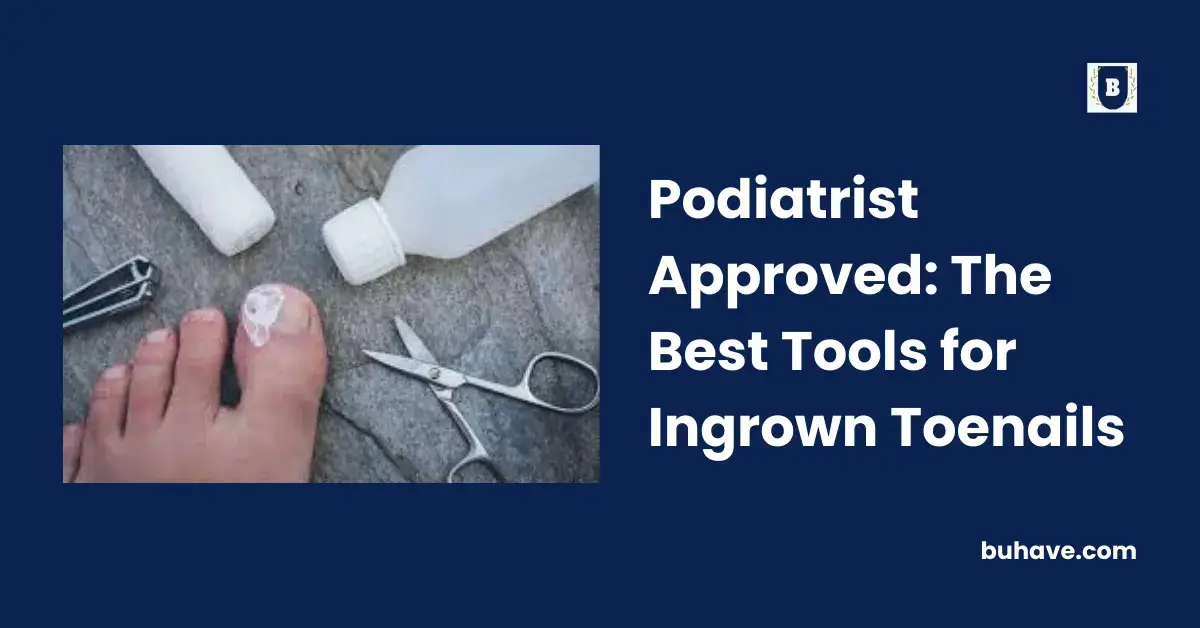Ingrown toenails are not only an aesthetical but also a medical problem. And traditional home remedies do not always suffice to address the issue of painful ingrown nails once and for all.
But where does this problem stem from? Well, the causes are manifold. Stubbing your toe or dropping a heavy object on it might provoke an ingrown toenail. Among other most common culprits are ill-fitting shoes, nail fungus, aging, genetic factors, diabetes, and improper trimming. Still, no matter the cause, the onus is always on you to deal with the unpleasant consequences. And the best way to go about this is to ensure you have the best tools for ingrown toenails in your arsenal. And though today’s list can by no means be considered as comprehensive, you may definitely want to familiarize yourself with it.
Epsom Salt and Essential Oils
Those afflicted with ingrown toenail conditions will tell you that their proper toenail care routine starts with soaking. It’s not a secret that ingrown toenails can grow thicker and thus tougher to trim over time. In such cases, even professional ingrown toenail correction tools may be powerless. That’s where foot soaks come in and save the day.
If you want to get the most out of your soaking session, consider adding Epsom salt into the lukewarm water. Not only will it help to soften the skin around the problematic nail but also reduce inflammation.
You can also use essential oils for the same purpose. Tea tree, rosemary, cedar wood, lemongrass, and eucalyptus essential oils are known for their anti-inflammatory and antifungal properties. So, they can be applied right on your skin during or after your pedicure sessions.
Ingrown Nail Files and Lifters
Once you’re done soaking your feet, you may want to start trimming your toenails right away. But before actually doing this, consider taking a couple of other steps to ensure the procedure goes as smoothly as possible.
First of all, ensure your toenails are ready for trimming. As it has been noted earlier, it might be tricky to get under the ingrown spur and trim the curly toenail properly. That’s where nail lifters may come in particularly handy. In mild cases, you can use an ingrown toenail lifter to encourage your nail to unroll.
This will create some space between your nail and affected skin and help relieve pressure. After that, you can attend to your ingrown toenails using podiatrist tools for ingrown toenails.
Need more tools to help an ingrown toenail?
Keep a reliable toenail file or emery board handy. Ingrown toenails are more prone to deformities and becoming brittle. So, polishing and filing your toenails properly will save you from snags, flaking, and splits. What’s more, professional toenail files will help you scrape the skin at the sides of the problematic toenail and even gently remove its crumbly part.
Scissors and Nippers
Just like any other health condition, ingrowns should be managed regularly and carefully. So, when it comes to trimming problematic toenails, you should never skimp on professional podiatrist tools for ingrown toenails.
People having ingrown toenails might need to spend more time looking for the right nail cutters. Thus, ingrown toenail scissors normally have longer handles and straight blades, which afford a more ergonomic grip and a healthy, clean cut. Alternatively, you can go for dedicated straight-edge clippers that can cut through thick toenails and give you more control.
To choose the best nippers for ingrown toenails, pay attention to such characteristics as the ease of use, design, sharpness, and durability. Also, make sure your cutters are made of high-quality stainless or titanium steel.
Disinfectants, Antibacterial Ointments, and Moisturizers
Now that you know what tools to use for your ingrown toenail, you should get in the habit of regularly disinfecting them.
You don’t have to fork out on expensive solutions for your pedicure instruments as long as you don’t share them with anybody.
Undoubtedly, you have some rubbing alcohol or hydrogen peroxide in your medicine cabinet. You can safely use these solutions for disinfecting your clippers, nail files, lifters, and cuticle pushers.
If you’re prone to getting ingrowns, make it your rule to apply antibacterial ointments after completing your at-home pedicure.
Also, it’s a good idea to finish your foot treatment with quality moisturizers. They are indispensable for preventing your skin from overdrying and peeling, which may perpetuate the problem of ingrown toenails.

